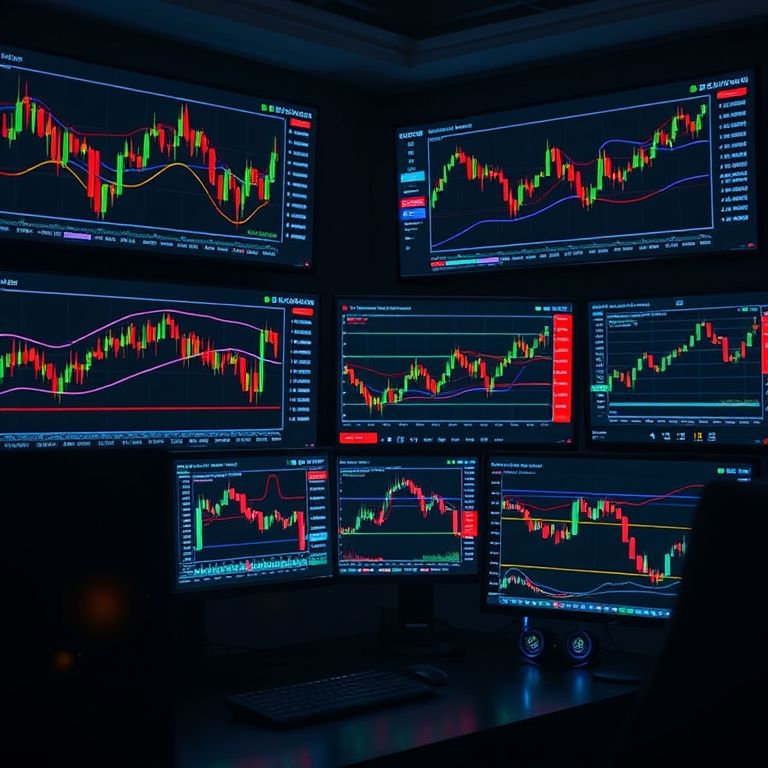Best fundamental indicators for forex trading
Best fundamental indicators for forex trading
Introduction
In forex, the chart tells a part of the story, but the macro narrative drives big moves. A surprising payroll release, a stubborn inflation print, or a central bank signal can flip a currency’s trend in hours. This piece cuts through the noise to lay out the best fundamental indicators, how to use them in practice, and what they mean for trading across assets—from forex and stocks to crypto, indices, options, and commodities. It also touches on prop trading, DeFi, and the AI-driven edge that’s reshaping the field. “Trade the story, not just the chart” isn’t just a slogan here—it’s a practical approach that helps you stay ahead.

What to watch and why it matters
Macro growth and inflation
- GDP growth, CPI, PCE, and core inflation numbers shape the real yield picture and the Fed/ECB/BoJ trajectory. When inflation cools faster than expected, rate paths shift, and that often weakens a currency’s bid or strengthens its foe. Case in point: a hotter-than-expected CPI can spur a sharp gain in the dollar as rate expectations tighten.
Labor market and consumer activity
- Nonfarm payrolls, unemployment, wage growth, and consumer confidence drive spending power and risk appetite. A robust jobs report tends to lift dollar-valued pairs and risk assets alike, while soft data may unwind crowded trades. Personal anecdotes from traders who follow payroll days show how a single release can unlock a week’s worth of technical setups.
Policy expectations and yield dynamics
- Central bank statements, dot plots, and forward guidance shape expectations more than any single meeting. The yield curve and differential between regions tell you where money is flowing. Even subtle shifts in rhetoric can precede price moves, giving you a heads-up to adjust exposure.
Global balance of payments and commodity linkages
- Trade balances, commodity cycles, and capital flows affect currencies tied to commodity exports (think AUD, CAD, NZD). When commodity prices run hotter, commodity currencies often strengthen on fundamental demand shifts.
Cross-asset confirmations and risks
- Fundamentals don’t live in a vacuum. The same data point can echo in stocks, bonds, and crypto via risk sentiment and liquidity. A strong inflation print might lift yields, pressure equities, and push safe-haven bids—creating competing forces you can only navigate with a multi-asset lens.
Turning data into trades: practical tactics
- Build a narrative: at release time, compare actual vs. consensus, skim the central bank stance, and observe price action for confirmation. If the market price fails to move on a surprise, note the execution risk and potential positioning myths.
- Scenario planning: map out “if data beats” and “if data misses” outcomes, then size and hedge accordingly. Use stop levels tied to volatility rather than fixed distance.
- Confirm with cross-markets: align forex moves with fixed-income and equity behavior to avoid chasing a false signal.
Strengths and caveats across assets
- Forex often reacts quickly to macro shifts, but timing can vary by regime. Stocks and indices may lag or amplify based on risk appetite. Crypto can react to on-chain data and liquidity, sometimes moving on narratives outside traditional macro. Options and commodities add layers of volatility and hedging potential that require careful premium pricing and cycle awareness.
DeFi, smart contracts, and AI: the near future
- DeFi introduces on-chain liquidity signals and governance metrics that can inform cross-border capital flow indicators, yet fragmentation and regulatory risk pose challenges. AI accelerates data digestion, backtesting, and scenario analysis, turning complex fundamental menus into actionable ops quickly. A smart contract layer could automate reaction to specific data beats, adding consistency to your edge.
Prop trading prospects and slogans
- In a world where capital is increasingly data-driven, fundamental-following prop desks seek teams who can translate macro signals into disciplined, diversified, cross-asset bets. A crisp guiding line: “Best fundamental indicators for forex trading” becomes a platform for scalable, informed decisions. The trend is toward more integrated data pipelines, risk controls, and AI-assisted execution—with smart contracts and automation helping scale and speed up from idea to trade.
Reliability tips
- Anchor decisions to a clear macro framework, test ideas across a few different regimes, and keep risk parity across assets. Be mindful of data-induced whipsaw in low-liquidity sessions and avoid overfitting to one data point.
In the end, fundamentals still tell the story behind the price. Embrace the narrative, hedge with cross-asset checks, and ride the wave of a future where smart contracts and AI reshape how you trade fundamentals across forex, stock, crypto, indices, options, and commodities. Trade the story. Own the edge.
YOU MAY ALSO LIKE




